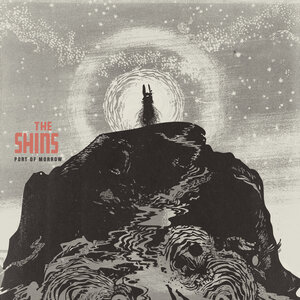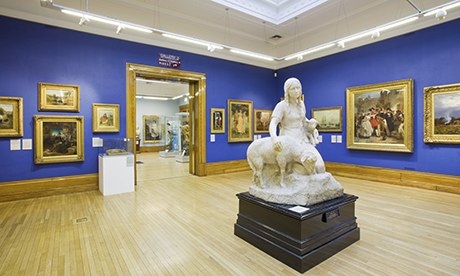InDesign was a completely new piece of software for me this project, the inductions and tutorials really helped me to understand the basics of how the program worked, however I found that I remember more through doing it on my own afterwards rather than following the set instructions. The print dungeon induction also opened my eyes to the range of ways my work can be printed; that it’s important to consider scale, format, paper quality ect as all of these things would inevitably inform and shape my final work. I feel as though this project has introduced me to these things on a slightly more than basic level, I feel confident using these techniques to achieve what I want to, but I’m also very keen on exploring these things further, to see what other formats of books, leaflets, print out ect I can transfer my work to, allowing my illustrations to be in formats that they previously haven’t been before.
2. Which approaches to research have you found most valuable during this module. How have you interrogated your research to identify appropriate ideas?
This entire module has really opened my eyes to the importance of research. I’ve always found that travelling, even just a little to a new location, has always inspired me a bit but I’ve never used experiential research to really inform my illustrations before. I’ve tackled briefs were I’ve done research but only usually in a factual sense, to go out and experience what I’m researching, to see it with my own eyes and notice my own typologies or really listen and observe people, was something completely new to me and something I’ve found to be invaluable to the initial ideas and development of my project. The merging of different sources of research has also been integral to my project. While my own experiential research resonated with me, my factual research helped it to resonate with others too, making for a stronger overall concept. Before this module I didn’t even know reportage illustration really existed, and since experiencing it I’ve found it’s something that I really connect with and thoroughly enjoy.
3. What strengths can you identify within your submission and how have you capitalised on these?
I think that the main strength I’ve really drawn upon and found most helpful throughout this brief was simply enjoying what I was doing. From the location to research and drawing out scamps and developing things further, I feel because I was really engaging with my research and subject matter, my work ethic and drive to complete the project to the highest level I could came easily to me. I tried to be extensive in all aspects of this brief because it was something I really wanted to do justice. For me, this module has highlighted the importance of really getting involved with your brief, and while I understand not ever brief is going to be as enjoyable, it’s shown me that by digging a little deeper and finding something you enjoy within it, it makes the workload a lot easier to manage.
4. What areas for further development can you identify within your submission and how will you address these in the future?
To be even more extensive and experimental in my mock-ups and scamps. It would have been nice to have planned even better so that I had more time to play around with the composition through multiple quick scamps for every page so that it was as developed as much as possible. Also to not get too caught up in my sketchbook, whilst I really like a lot of my illustrations within the sketchbook, they took a lot of time to make, and if I’d worked a little more loosely and faster I may have got more variations drawn. Perhaps do separate scamps for composition (quick, sketchy, colourless) then pick the best ones and develop them further with colour and media rather than trying to do both at the same time.
5. How effectively are you making decisions about the development of your work? What informs these decisions? What problems have you identified and how have you solved them?
I think my decision-making has gotten a lot better in this module. I’ve found that feedback can be very useful whether you’re faced with a problem, or just want to explain your idea to someone new. Having other people comment on your work brings a new perspective and I’ve found has helped me to recognise whether the choices I was making were the right ones. It’s important to remember that your illustrations have to stand alone and make sense to other people without them seeing the vast amounts of research or development that’s gone into them. The choices I’ve made within this project haven’t purely been whatever I want to do, but rather how best the choices I make can impact my project in the best way possible, making it the most accessible and understandable it can be to others while still staying true to my own aims and ambitions for the final book.
6. How effectively have you managed this project and organised yourself during this module?
My organisation and time management in this module has really improved. During the hand in period of the OUIL403 I found I was rushing to catch up with blog posts and write about things as well as I would have liked to, however this time around I feel much more confident and in control. I’ve split my time between practical and writing up a lot better and as a result I’ve managed to get everything organised and ready for hand in earlier and to a higher standard than I think I did last time. I’ve also had time to go back and add extra comments and notes to previous blog posts and check my work regularly with the learning objectives and grading system. I think a big part of this is purely being more engaged with the module and brief; really getting into it and enjoying it has made a big difference and I feel has boosted up my work ethic!
My organisation and time management in this module has really improved. During the hand in period of the OUIL403 I found I was rushing to catch up with blog posts and write about things as well as I would have liked to, however this time around I feel much more confident and in control. I’ve split my time between practical and writing up a lot better and as a result I’ve managed to get everything organised and ready for hand in earlier and to a higher standard than I think I did last time. I’ve also had time to go back and add extra comments and notes to previous blog posts and check my work regularly with the learning objectives and grading system. I think a big part of this is purely being more engaged with the module and brief; really getting into it and enjoying it has made a big difference and I feel has boosted up my work ethic!


.JPG)






















.jpg)



